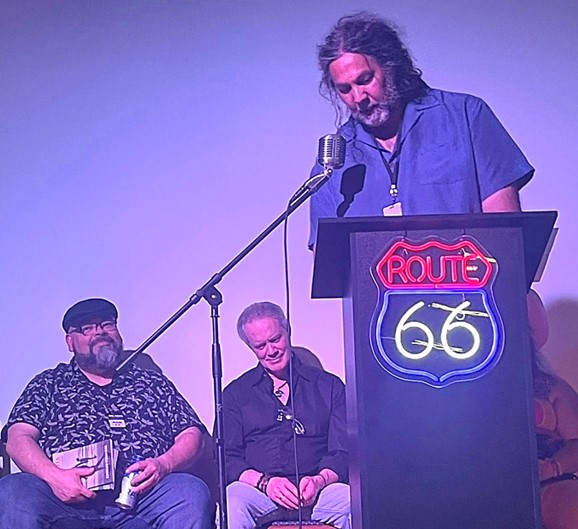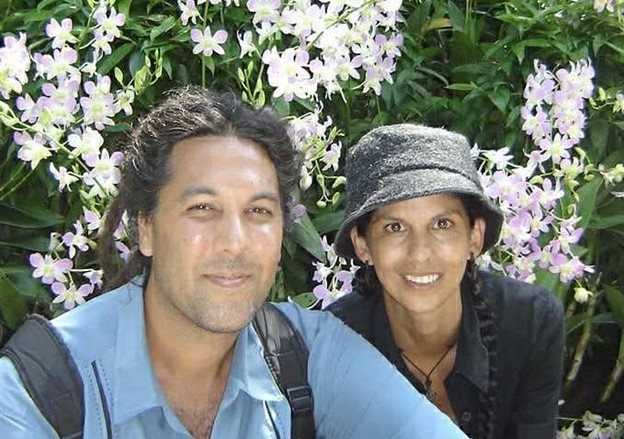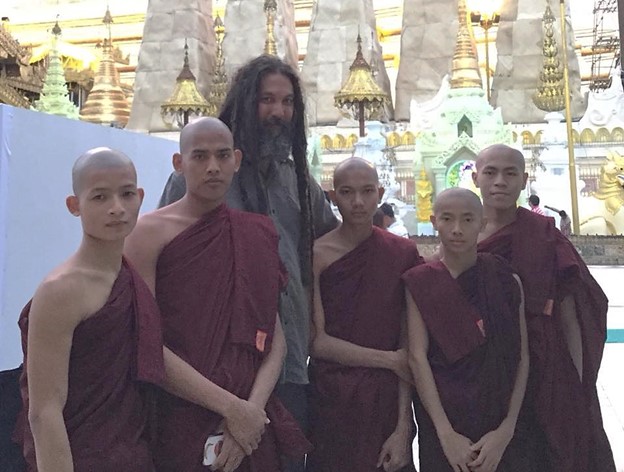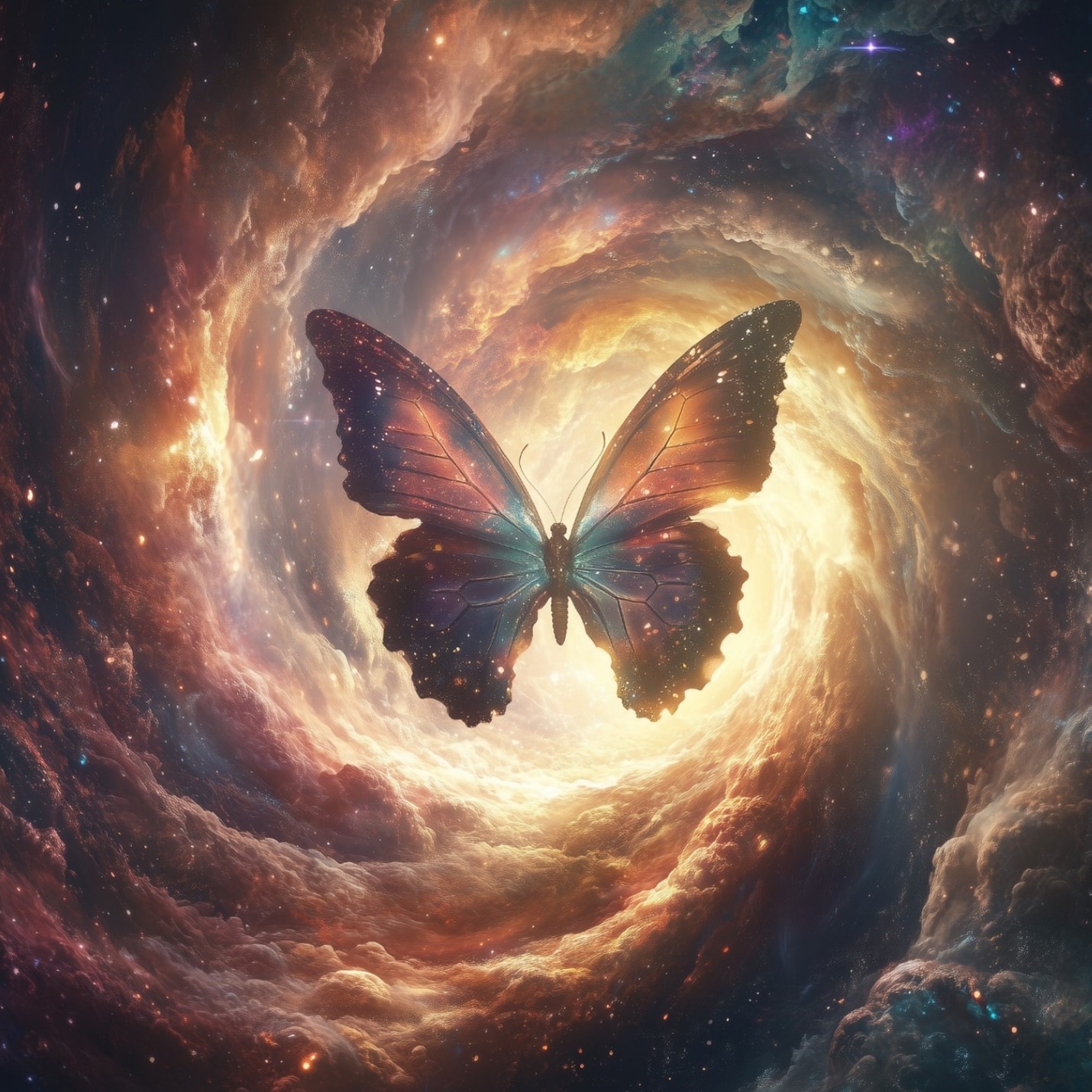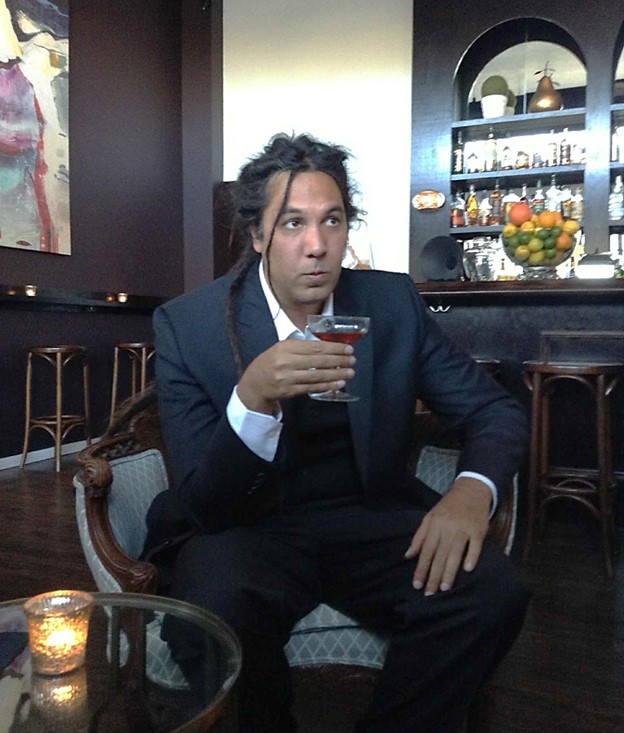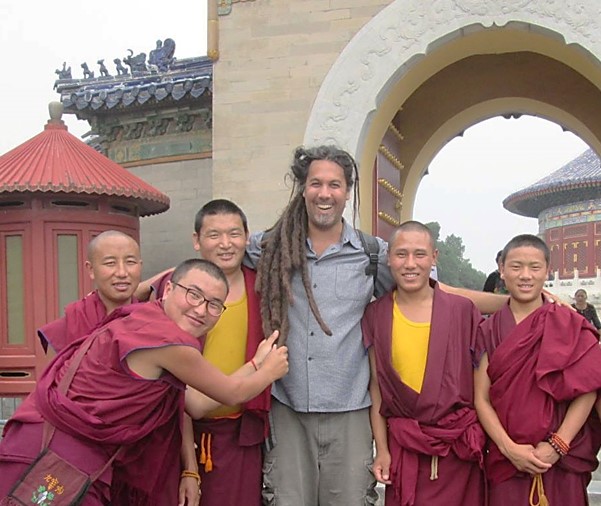

J. Martin Strangeweather shared their story and experiences with us recently and you can find our conversation below.
J. Martin, so good to connect and we’re excited to share your story and insights with our audience. There’s a ton to learn from your story, but let’s start with a warm up before we get into the heart of the interview. Are you walking a path—or wandering?
I’ve definitely been walking a path these last few years, more like blazing a trail through uncharted territory, namely the afterlife. Researching the dying brain process and publishing my findings in a book titled “The Eidetic Afterlife Hypothesis” and a monthly online series of death-related explorations called “Notes Concerning Eternity” has inadvertently cast me in the role of a modern-day psychopomp. A psychopomp, in classical mythology and spirituality, is any figure who guides souls to the land of the dead. By examining the psychological, phenomenological, and neurophysiological mechanics underlying such near-death phenomena as temporal dilation, out-of-body experiences, life reviews, reuniting with the deceased, and encountering the divine light, the eidetic afterlife hypothesis (along with the Notes Concerning Eternity) effectively maps out the mysterious experience of dying. I’m not claiming the eidetic afterlife hypothesis is absolutely correct (increasingly better research tools will provide increasingly better findings), but right now it provides the most plausible explanations for every consistently recurring phenomenon associated with near-death experiences and descriptions of the hereafter.
Can you briefly introduce yourself and share what makes you or your brand unique?
I’m J. Martin Strangeweather, a poet, novelist, artist, teacher, philosopher, and thanatologist (a researcher of death and dying). I’m the founder and Chief Executive Prognosticator of the Santa Ana Literary Association. I’m also the originator of the literary genre known as “mediatized realism.” Google “Poems from the Mediatized Soulscape” if you’d like to learn more about mediatized realism. Currently I’m attempting to bridge the gap between science and spirituality with my eidetic afterlife hypothesis (link below).
Okay, so here’s a deep one: What relationship most shaped how you see yourself?
I’ve been educated by world-famous physicists, philosophers, and authors, but I’d have to say the person who has taught me the most about myself is Mary Rose, my sunshine on a cloudy day, my pirate queen, and my groundedness. Relationships aren’t easy, they expose who you really are–the good, the bad, and the downright ugly–but Mary and I make a good team. We’ve been adventuring together for 32 years. During that time we’ve explored 54 countries, setting foot on every continent except Antarctica! Mary Rose is a floral designer who has worked on a bunch of really cool projects, including the award-winning “Festival of Lights” Christmas display at the historic Mission Inn, and the highly acclaimed “Fleur de Ville” floral art show at South Coast Plaza.
What did suffering teach you that success never could?
That’s easy: empathy and compassion. Suffering also taught me to be grateful, and to persevere. I’ve studied quantum mechanics under renowned theoretical physicists and debated philosophy with Buddhist monks in Tibet, traveling around the globe in pursuit of knowledge, and the most important thing I’ve learned is this: the world would be a better place if we all just tried to be a little kinder, a little more patient, and a little more forgiving.
Next, maybe we can discuss some of your foundational philosophies and views? Is the public version of you the real you?
Of course not. I’m not even sure there is a real me, or maybe I should say the real me is a collection of recurring roles that are liable to change from minute to minute and decade to decade. Some roles are useful for certain situations, while other roles are useful for other situations, and sometimes we just outgrow a role and replace it with a different one. But I suppose there is a “real” me. Would you like to know who I really am? I am every word, thought, and deed that has ever issued from me. I am every penny I have ever spent. I am the truth behind every lie I have ever told. And so are you.
Before we go, we’d love to hear your thoughts on some longer-run, legacy type questions. What do you think people will most misunderstand about your legacy?
Most people will misunderstand the eidetic afterlife hypothesis, arguably my most ambitious contribution to the ongoing chronicles of humanity. But I’m okay with that. All great works get misunderstood. Whether you are a theist, an atheist, or agnostic, the eidetic afterlife hypothesis will challenge your belief system. It’s very punk in that sense. I didn’t write the hypothesis to replace religion (I don’t have the time or inclination to be a cult leader), and I certainly didn’t write it to get rich (you can read it for free on the Near-Death Experience Research Foundation’s website, The Internet Archive, Facebook, and several other online avenues). I wrote it because somebody had to, and my interdisciplinary studies (philosophy + psychology + theoretical physics + comparative religion + world mythology) made me the perfect candidate for the job.
Contact Info:
- Facebook: https://www.facebook.com/profile.php?id=61558218727017
- Youtube: https://www.youtube.com/@booksaremedicine7229
- Other: Link to read “The Eidetic Afterlife Hypothesis” for free on the Near-Death Experience Research Foundatrion’s website:
https://www.nderf.org/NDERF/death_dying.pdf
